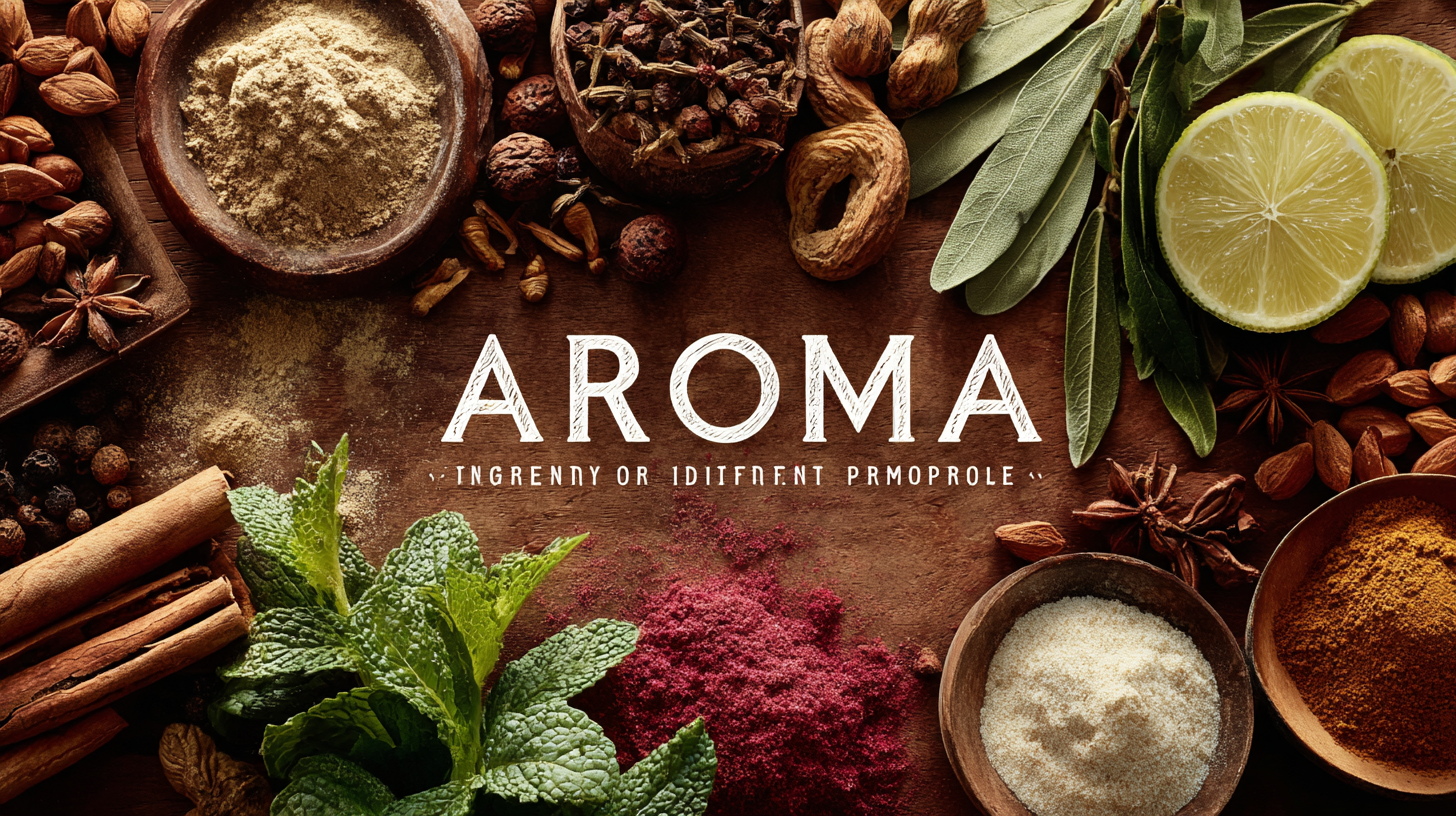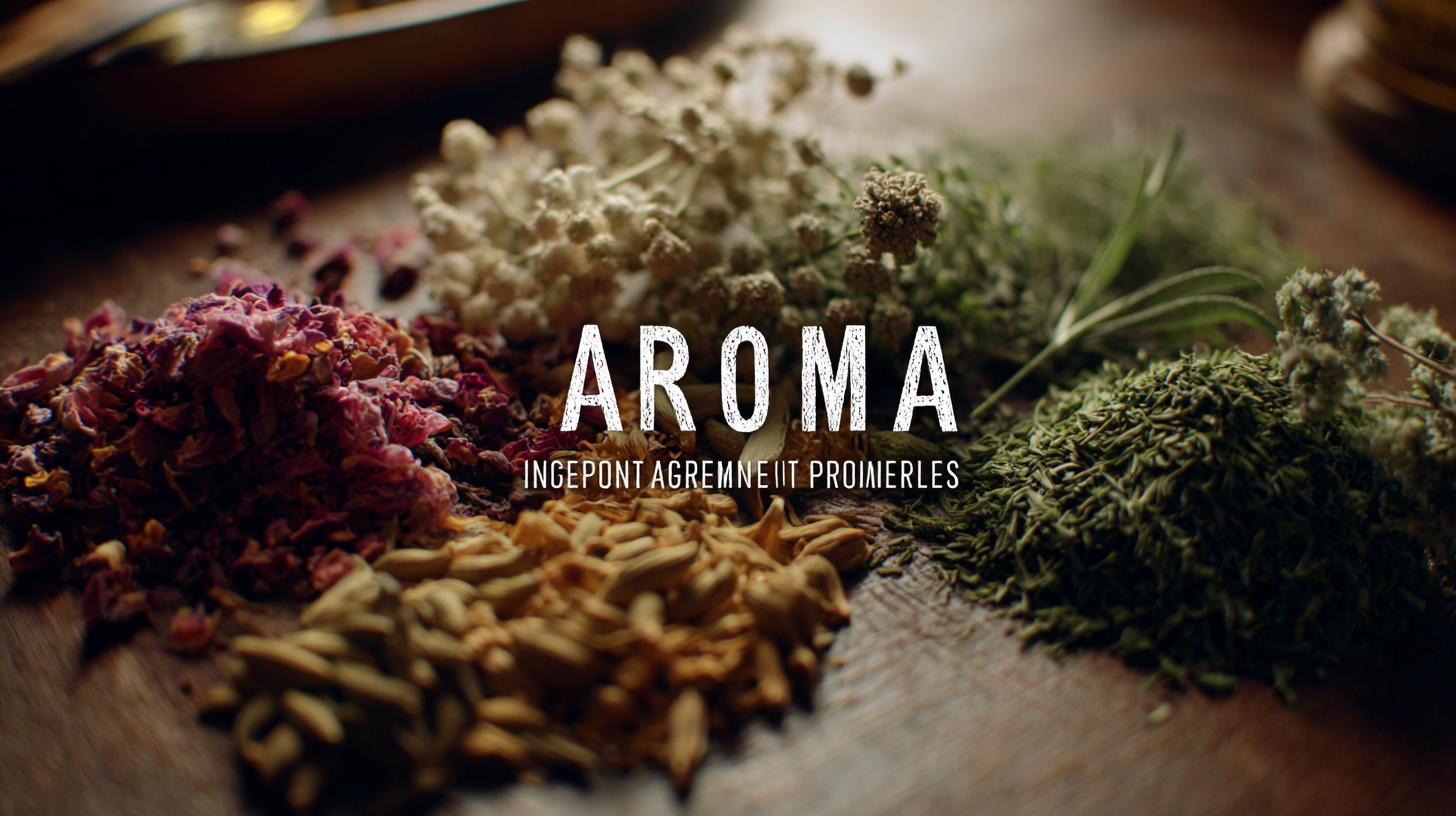

In the ever-evolving world of fragrance, understanding the significance of aroma ingredients is essential for crafting the perfect scent profile. Aroma ingredients, derived from natural sources or synthetically created, serve as the building blocks of perfumes, candles, and other scented products, each bringing its unique characteristics and olfactory nuances to the blend. Whether it's the fresh, uplifting notes of citrus, the warm embrace of vanilla, or the earthy depth of sandalwood, each ingredient plays a crucial role in evoking emotions and memories. This blog aims to delve into the fascinating world of aroma ingredients, comparing the top selections based on their scent profiles, versatility, and the feelings they evoke. Join us as we explore how these essential components can be expertly combined to create harmonious fragrances that captivate the senses and elevate everyday experiences.

In 2025, the fragrance industry is witnessing a transformative evolution driven by advancements in scent technology and a shift towards personalization and sustainability. As consumers increasingly seek unique olfactory experiences, the integration of personalized scent technology has revolutionized how fragrances are crafted and marketed. According to industry reports, nearly 70% of consumers now prioritize personalized products, underscoring a broader trend where fragrance becomes a reflection of individual identity rather than merely an accessory. This evolution is exemplified in the recent spring fragrance trends, showcasing how scent is evolving into a bespoke experience tailored to the personal narratives of wearers.
Additionally, scientific research is playing a pivotal role in shaping modern perfumery. Exploration into sugar and volatile compounds in grape varieties under stress conditions has revealed intricate relationships that influence aroma profiles. This indicates that the understanding of how natural elements interact can lead to innovative fragrance compositions that truly resonate with consumers. Moreover, as the connection between sustainability and scent deepens, brands are exploring eco-friendly practices while still delivering complex and alluring fragrances that align with consumer values. The future of scent is not just about aroma; it's about the narrative behind each formulation, ensuring that every scent tells a story that consumers can connect with on a deeper level.
In today's fragrance landscape, the interplay between natural and synthetic aroma ingredients is redefining scent profiles. The modern perfumer deftly balances these elements to create captivating fragrances, drawing inspiration from both traditional ingredients and innovative chemical compounds. The rise of synthetic aroma chemicals has revolutionized the industry, allowing creators to design scents that can mimic nature and evoke emotions in entirely new ways. As the market for aroma chemicals is projected to reach over $8 billion by 2032, it is clear that consumers are increasingly drawn to these meticulously crafted fragrances that promise consistency and longevity.
Recent trends also highlight the shifting preferences in scent choices, with a growing appetite for warm, earthy notes that evoke sophistication and nostalgia. Perfumes with musk undertones or woodsy characteristics have emerged as favorites among those seeking to embody an aura of luxury and refinement. Furthermore, as research into cannabis terpenes reveals new dimensions of scent complexity, perfumers are uncovering unique aroma compounds that can enhance traditional fragrance profiles, demonstrating the seamless blend of nature’s gifts and human ingenuity in contemporary olfactory art.

When it comes to selecting the right aroma ingredients for your brand, it’s essential to consider the overall scent profile you want to achieve. Each ingredient holds unique properties that can evoke specific emotions and memories, ultimately influencing consumer perception. Start by clearly defining your brand’s identity and the message you wish to convey through scent. Do you want to evoke freshness, warmth, or sophistication? Understanding this will guide your selection process significantly.
Tips: Experiment with blending different aroma ingredients to create a signature scent that resonates with your target audience. For instance, combining floral notes with citrus can create an uplifting ambiance, while earthy tones can establish a calming environment. Additionally, consider seasonal trends and customer preferences when choosing your ingredients. Conducting surveys or focus groups can provide valuable insights into what scents appeal most to your audience.
Lastly, don’t overlook the importance of quality. Sourcing high-quality aroma ingredients not only enhances the longevity and appeal of your products but also aligns with an ethos of integrity in your brand. Work with reputable suppliers and consider the sustainability of the ingredients you choose, as consumers are increasingly drawn to brands that prioritize eco-friendly practices. This careful selection process will ultimately help you craft a memorable scent profile that truly represents your brand.
As the organic perfume market is projected to reach $8.57 billion by 2023, with a compound annual growth rate of 5.15% anticipated from 2024 to 2031, sustainable practices in sourcing aroma ingredients are increasingly shaping consumer preferences. The shift towards natural and eco-friendly components is not just a trend but a necessary evolution that reflects growing environmental awareness among consumers. Brands are actively seeking sustainable alternatives that minimize their ecological footprint while enhancing scent profiles.
Particularly, the market for natural spices and botanicals is witnessing significant growth, driven by the demand for organic solutions. For instance, black pepper is anticipated to reach a market size of $5.1 billion by 2032, growing at a rate of 3.41% annually from 2024 to 2032. This trend highlights the importance of responsibly sourcing ingredients, as consumers increasingly favor products with a clear commitment to sustainability. By integrating eco-conscious practices, brands can create compelling scent profiles that resonate with today’s environmentally-aware audience.
The art of blending scents has evolved significantly, with innovative techniques revolutionizing the way fragrance creators approach their craft. One of the most exciting trends is the incorporation of technology into scent formulation. Advanced software and artificial intelligence are now being used to analyze various aroma ingredients, allowing perfumers to predict how different scents will interact. This data-driven approach enhances the creative process, enabling the creation of complex and harmonious fragrance profiles that resonate with consumers on a deeper level.

Another emerging trend in scent blending is the focus on sustainability and natural ingredients. As consumers become more environmentally conscious, there is a shift towards using ethically sourced materials and biodegradable options in fragrance production. Techniques such as cold extraction and fermentation are gaining popularity, unlocking unique scent characteristics while minimizing the ecological footprint. By prioritizing sustainability, brands not only meet consumer demand but also position themselves as leaders in a responsible market. The future of scent blending is not just about creating appealing aromas, but also about embracing innovative practices that reflect a commitment to the planet.